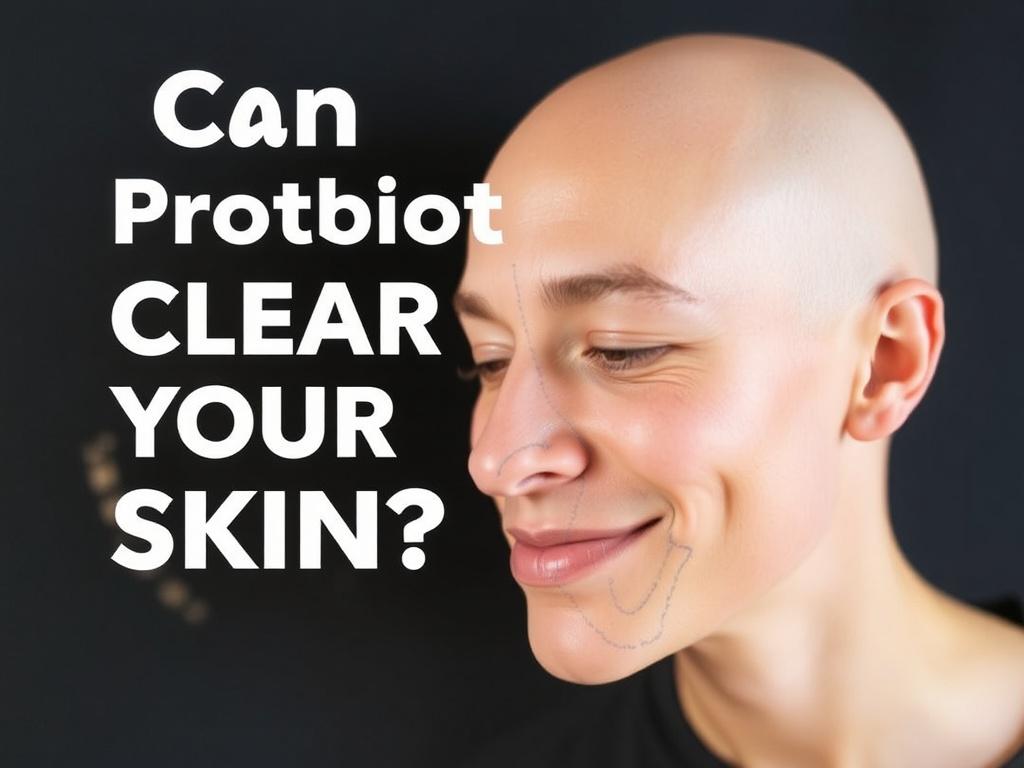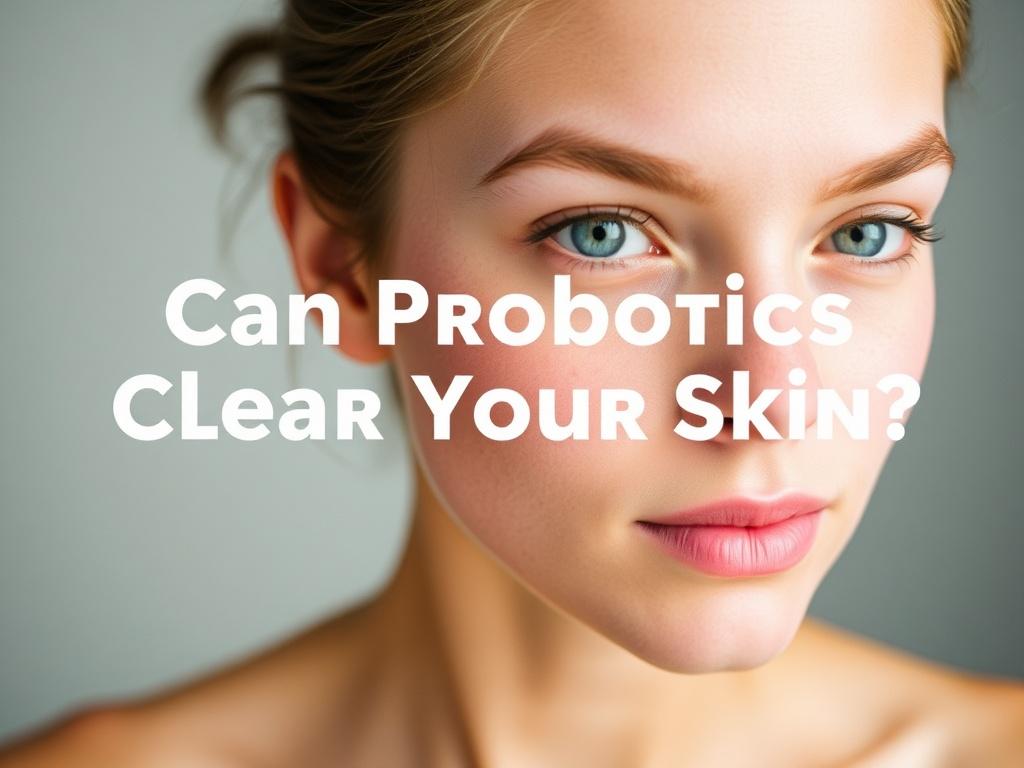Содержание статьи
- 1 Understanding Probiotics: What Are They?
- 2 The Gut-Skin Axis: A Two-Way Conversation
- 3 Topical vs. Oral Probiotics: What’s the Difference?
- 4 Which Probiotic Strains Are Best for Clear Skin?
- 5 How to Incorporate Probiotics for Better Skin
- 6 Common Questions About Probiotics and Skin Health
- 7 Additional Benefits of Probiotics for Skin
- 8 Myths and Misconceptions About Probiotics and Skin
- 9 Future Directions: What’s Next for Probiotics and Skin Care?
Probiotics have taken the wellness world by storm in recent years, celebrated for their ability to balance gut health, support immunity, and boost overall well-being. But what about their effects beyond digestion? Specifically, can probiotics clear your skin? If you’ve struggled with conditions like acne, eczema, or general dullness, you might have wondered whether adding probiotics to your routine could offer a natural solution. The connection between gut health and skin is a fascinating topic that blends modern science with ancient wisdom, prompting many people to ask: what role do probiotics actually play in skin health?
In this article, we’ll unpack the science behind probiotics and skin, explore various types of probiotics that show promise, and look at how you can incorporate them into your lifestyle for potentially clearer, healthier skin. Whether you’re a skincare enthusiast, someone seeking natural remedies, or simply curious, this journey through the world of probiotics and skin is designed to answer your most pressing questions.
Understanding Probiotics: What Are They?
Before diving into how probiotics might affect your skin, it’s important to understand what probiotics actually are. Probiotics are live microorganisms, often referred to as “good bacteria,” that provide health benefits when consumed in adequate amounts. These friendly bacteria primarily reside in your gut, where they play a crucial role in digestion, the immune system, and maintaining a balanced microbial environment.
The most common probiotic strains belong to the Lactobacillus and Bifidobacterium genera, but there are many others with unique properties. You might find probiotics naturally in fermented foods like yogurt, kefir, sauerkraut, kimchi, and kombucha, or as supplements in capsules and powders.
The key question becomes: how do these tiny microorganisms, working mostly inside your gut, affect the appearance and health of your skin?
The Gut-Skin Axis: A Two-Way Conversation

Science has increasingly shown that the gut and skin communicate in what is called the “gut-skin axis.” This means the health of your digestive system can significantly impact your skin’s condition. When your gut microbiome—the collection of all microorganisms in your digestive tract—is out of balance, often called dysbiosis, it can trigger inflammation and oxidative stress. Both of these processes are key contributors to common skin problems such as acne, eczema, rosacea, and even premature aging.
For example, an unhealthy gut lining might allow toxins and bacteria to pass into the bloodstream (a condition sometimes termed “leaky gut”), which can then provoke inflammatory responses acting on the skin. This inflammation often manifests as redness, irritation, or breakouts.
Probiotics help restore balance to the gut microbiome, suppress pathogenic bacteria, and enhance the gut barrier’s integrity. From there, the systemic benefits may include reduced inflammation throughout the body, including the skin.
What the Research Says About Probiotics and Skin
Over the past decade, scientists have explored how probiotic supplementation and topical applications impact various skin conditions. Let’s take a look at some key findings:
- Acne: Several clinical trials suggest probiotics can reduce acne severity by decreasing systemic inflammation and balancing skin microbiota. For instance, oral Lactobacillus strains have shown promise in reducing acne lesions.
- Atopic Dermatitis (Eczema): Studies have found that certain probiotics, especially Lactobacillus rhamnosus GG, can reduce symptoms like itching and redness when taken orally during infancy or early childhood.
- Rosacea: While research is emerging, probiotics may help by calming inflammation and supporting a balanced microbial environment on the skin’s surface.
- Anti-Aging: Probiotics might improve skin barrier function and hydration, potentially slowing down skin aging signs such as wrinkles and dryness.
Though not a magic cure, probiotics seem to support and enhance conventional treatments for many skin conditions, paving the way for more natural, holistic skincare approaches.
Topical vs. Oral Probiotics: What’s the Difference?
You can introduce probiotics to your skin care routine in two main ways: orally (through diet or supplements) or topically (applied directly to the skin). Each method comes with its own set of benefits and applications.
Oral Probiotics
Oral probiotics support skin health from within by improving gut microbiome balance, reducing systemic inflammation, and boosting immune function. They tend to have a broader impact, helping your body as a whole, including the skin.
Topical Probiotics
Topical probiotics, found in serums, creams, and cleansers, deliver beneficial bacteria or their extracts directly to the skin. These products aim to restore the skin’s natural barrier, balance microbial communities on the surface, and calm irritation. Some strains used in topical products can reinforce skin flora diversity, which helps protect against harmful bacteria that trigger acne and inflammation.
Table: Pros and Cons of Oral vs. Topical Probiotics
| Type | Benefits | Limitations |
|---|---|---|
| Oral Probiotics |
|
|
| Topical Probiotics |
|
|
Which Probiotic Strains Are Best for Clear Skin?
Choosing the right probiotic strains can make a difference in outcomes. Not all probiotics have the same effects on skin, so understanding key strains helps you make informed decisions.
Lactobacillus Acidophilus
One of the most studied probiotics, Lactobacillus acidophilus promotes gut health and can reduce inflammation, which is crucial for clearer skin.
Bifidobacterium Longum
This strain strengthens the gut lining and has antioxidant properties that may help protect skin from oxidative stress.
Lactobacillus Rhamnosus GG
Known for its immune-modulating effects, this strain has been linked to improvement in eczema and overall skin barrier function.
Streptococcus Thermophilus
Used often in topical probiotics, this strain helps increase skin hydration and improves barrier repair mechanisms.
How to Incorporate Probiotics for Better Skin
Ready to try probiotics to clear your skin? Here are several practical approaches you can take:
1. Eat More Fermented Foods
Incorporating foods like yogurt, kefir, sauerkraut, kimchi, and miso provides natural, food-based probiotics alongside vitamins and minerals that support skin health. Focus on organic and non-pasteurized options to maximize benefits.
2. Choose a Quality Probiotic Supplement
Look for supplements with specific strains backed by research, high colony-forming unit (CFU) counts, and shelf stability. Consult a healthcare provider to find the best type and dose for your needs.
3. Use Topical Skincare Products with Probiotics
Many skincare brands now offer probiotic-infused creams, serums, and cleansers designed to soothe acne, reduce redness, and strengthen the skin barrier. Patch-test new products and introduce them gradually.
4. Maintain a Healthy Diet and Lifestyle
Probiotics work best alongside a diet rich in fruits, vegetables, healthy fats, and whole grains. Avoid excess sugar and processed foods, which can fuel bad bacteria and worsen skin problems.
Common Questions About Probiotics and Skin Health
Can Probiotics Clear Acne Completely?
While probiotics can significantly reduce inflammation and help balance the skin’s microbiome, they are not a guaranteed cure-all. Acne is multifactorial, influenced by hormones, genetics, diet, and skincare habits. Probiotics should be part of a comprehensive approach.
Are There Any Side Effects?
Most people tolerate probiotics well, but some may experience mild digestive changes initially. Topical products can occasionally cause irritation, especially if you have sensitive skin or allergies.
How Long Does It Take to See Results?
Oral probiotics may take weeks to months to show measurable improvement in skin, whereas topical probiotic products might offer quicker soothing effects. Consistency is key.
Can I Use Probiotics with Other Skincare Treatments?
Generally, yes. Probiotics complement many conventional treatments like benzoyl peroxide, retinoids, and moisturizers. Always consult your dermatologist when combining products.
Additional Benefits of Probiotics for Skin
0
Beyond clearance and inflammation reduction, probiotics offer other skin-enhancing benefits:
- Strengthened Skin Barrier: A healthier skin barrier means better moisture retention and defense against pollutants.
- Reduced Sensitivity: Probiotics can calm reactive skin and lower redness.
- Improved Hydration: Some probiotics increase natural moisturizing factors in the skin.
- Protection Against Free Radicals: Antioxidant properties help minimize photoaging and environmental damage.
Myths and Misconceptions About Probiotics and Skin

With the growing popularity of probiotics, misinformation abounds. Here are some common myths debunked:
- Myth: All Probiotics Are the Same. In reality, different strains have distinct benefits and mechanisms.
- Myth: Probiotics Can Replace Skincare or Medication. Probiotics are an adjunct, not a substitute for proven medical treatments.
- Myth: More Probiotics Means Better Results. Quality over quantity matters, and too many can sometimes upset your system.
- Myth: You Can’t Use Probiotics if You Have Sensitive Skin. Many probiotic formulations are gentle and suitable for sensitive skin, but patch testing is important.
Future Directions: What’s Next for Probiotics and Skin Care?
Ongoing research continues to uncover the complex relationship between our microbiomes and skin. Scientists are developing more targeted probiotic therapies that may personalize treatment based on an individual’s skin microbiota. Advances in microbiome analysis might soon enable dermatologists to recommend specific probiotic strains tailored for your unique skin concerns.
Additionally, synbiotics—combinations of probiotics and prebiotics (food for beneficial bacteria)—are gaining attention for their enhanced effectiveness. The skincare industry is also innovating with microbiome-friendly formulations to maintain the skin’s natural balance.
Summary of Tips for Using Probiotics to Clear Skin
| Step | Action | Notes |
|---|---|---|
| 1 | Incorporate fermented foods daily | Natural source of diverse probiotic strains |
| 2 | Select a high-quality probiotic supplement | Choose strains scientifically linked to skin health |
| 3 | Use probiotic skincare products | Apply to clean skin, especially on affected areas |
| 4 | Maintain a balanced diet and lifestyle | Avoid sugar and processed foods that disrupt microbiome |
| 5 | Be patient and consistent | Noticeable results may take several weeks |
Conclusion
So, can probiotics clear your skin? The answer isn’t a simple yes or no, but rather an encouraging “they can help.” Probiotics influence skin health primarily by nurturing a balanced gut microbiome and calming systemic and local inflammation. Whether taken orally or applied topically, probiotics support the skin’s natural barriers, reduce irritation, and improve conditions such as acne and eczema. While not a standalone cure, probiotics are a valuable part of an integrative skincare approach, especially when combined with a healthy lifestyle, diet, and good skincare habits. As research progresses, personalized probiotic therapies could become powerful tools in dermatology, opening fresh pathways toward naturally clear, glowing skin. If you’re curious about trying probiotics for your skin, start slow, choose quality products or foods, and listen to your body along the way. Your skin—and your gut—just might thank you for it.


